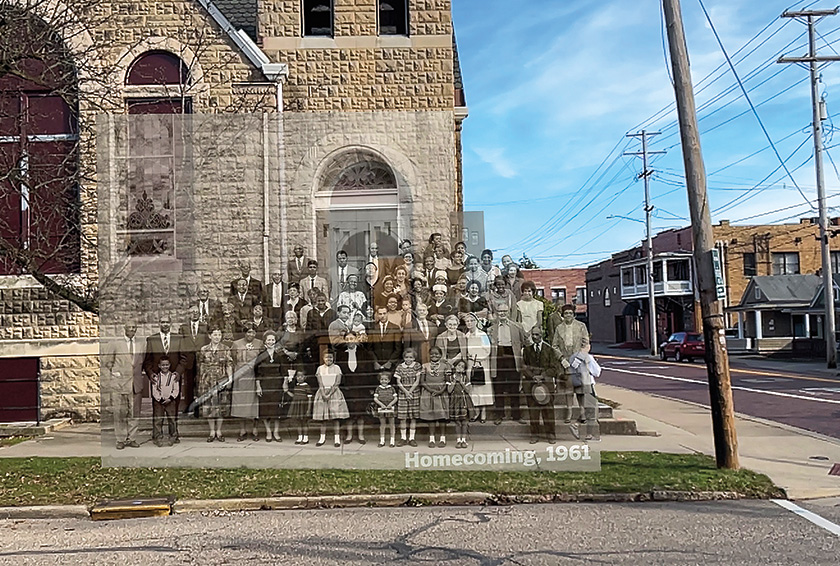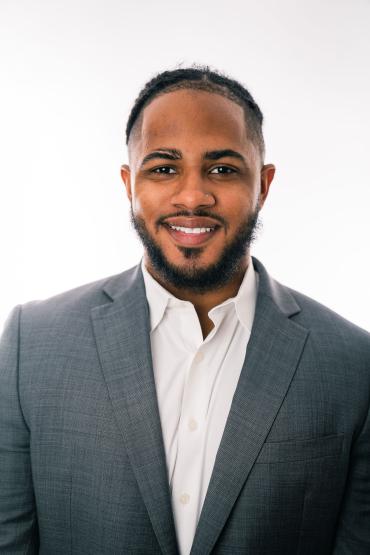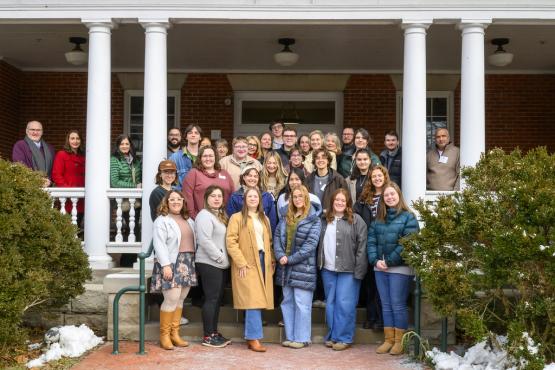
Depending on one’s frame of reference, OHIO alumni might associate the chrome-covered diner at 18 N. Court St. as Dalt’s, Court Street Diner or HangOverEasy—but those who graduated before 1961 will remember the site as the iconic Hotel Berry. A popular destination in the early 1900s, the historic hotel was then Court Street’s only Black-owned business and attracted many notables, including four U.S. presidents, entertainer Bob Hope and poet Robert Frost.
Though the building has been gone for more than 50 years, it is far from forgotten—especially in light of Invisible Ground, an augmented reality (AR) app and accompanying podcast that provide a unique opportunity to appreciate Southeast Ohio’s storied past. Hotel Berry was the first of eight sites selected for Invisible Ground’s “immersive historic markers,” which invite passersby to pause and peer into what once was.
Creator and producer Brian Koscho, BSED ’06, MFA ’22, describes each marker as a “funnel of sorts” and invites people to engage in various ways—first by reading the descriptive sign, then by scanning a QR code to download the app and view an AR rendering of the site’s past life layered over its present.
“On top of looking at it through your phone, each location also has an audio interpretation similar to a guided museum tour,” adds Koscho, who initially conceived the project as part of his MFA thesis. “The idea is that you leave the experience wanting to know more, and that’s where the podcast comes in.”

Congregants pose in front of the Mount Zion Baptist Church, now the Mount Zion Black Cultural Center. Photo courtesy Brian Koscho, BSED ’06, MFA ’22
Along with Hotel Berry, other points of interest in the Invisible Ground project include Mount Zion Baptist Church, the Soldiers & Sailors Monument on College Green and more. Koscho plans to introduce four more by the end of 2024 for a total of 12 sites—with Tablertown, a key site in Southeast Ohio’s Black history now known as Kilvert, next on the list. It’s all part of Koscho’s larger vision of creating a sense of place through a unique Venn diagram of history, technology and storytelling.
“I’m 41, so I can remember growing up in a world without [devices]—I know what it’s like to be trapped between the digital and the physical,” says Koscho. “I believe people should get out and learn about history in the actual places it occurred; we’re using technology to connect people to their communities in a meaningful way.”
Keep up with the Invisible Ground project at findinvisibleground.com.
Feature photo: The former Hotel Berry on Court Street. Photo courtesy Brian Koscho, BSED ’06, MFA ’22





